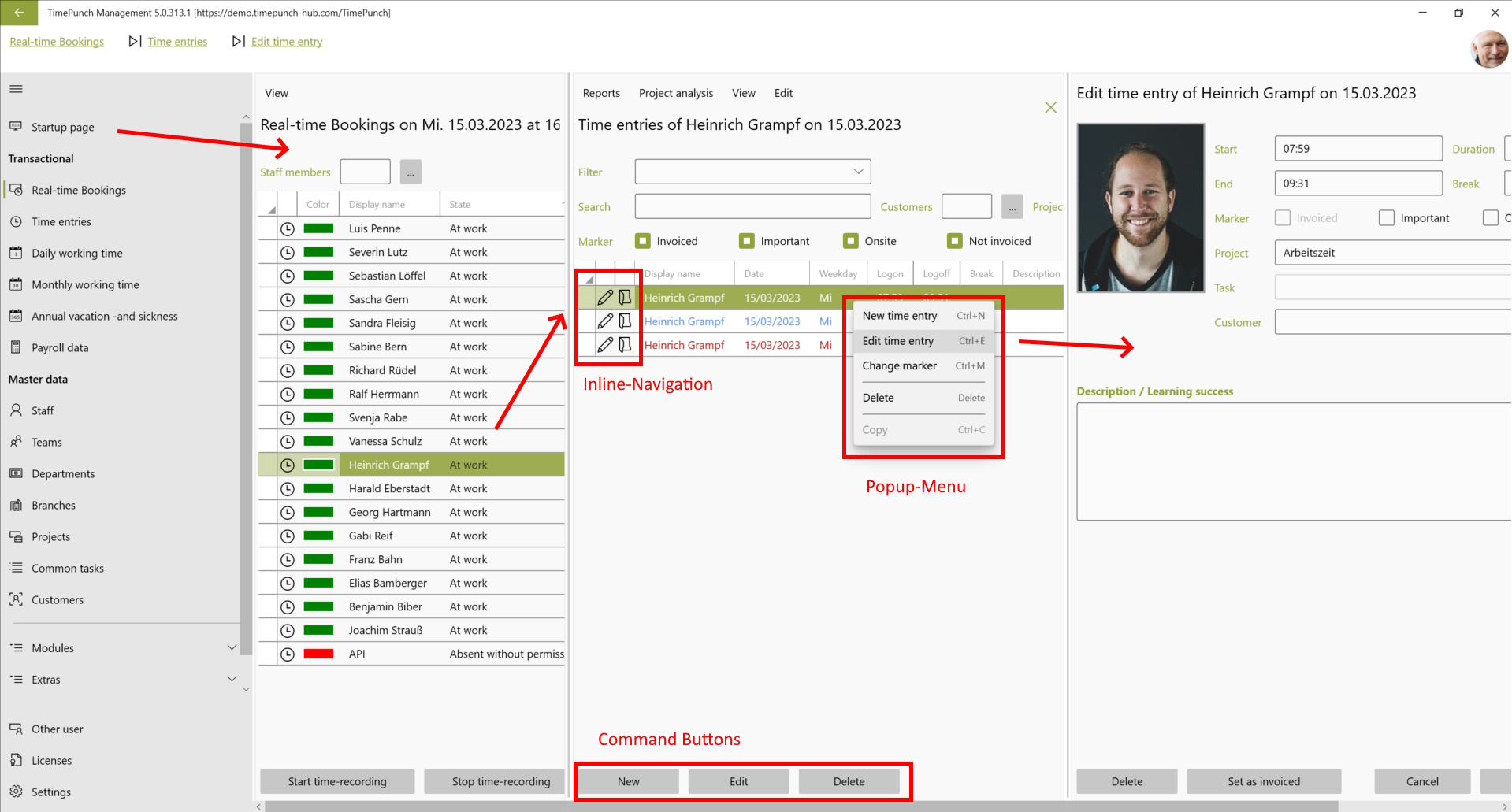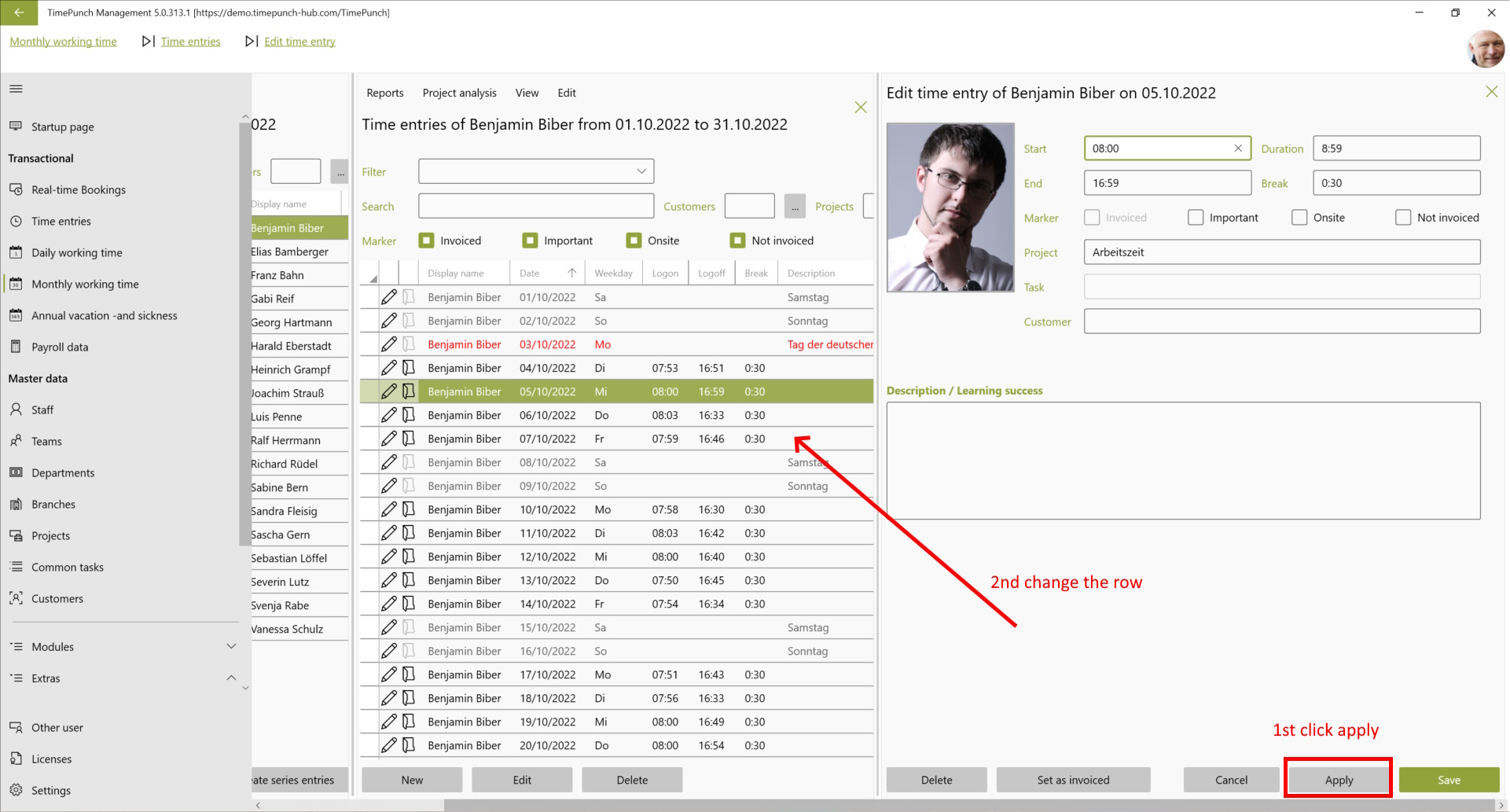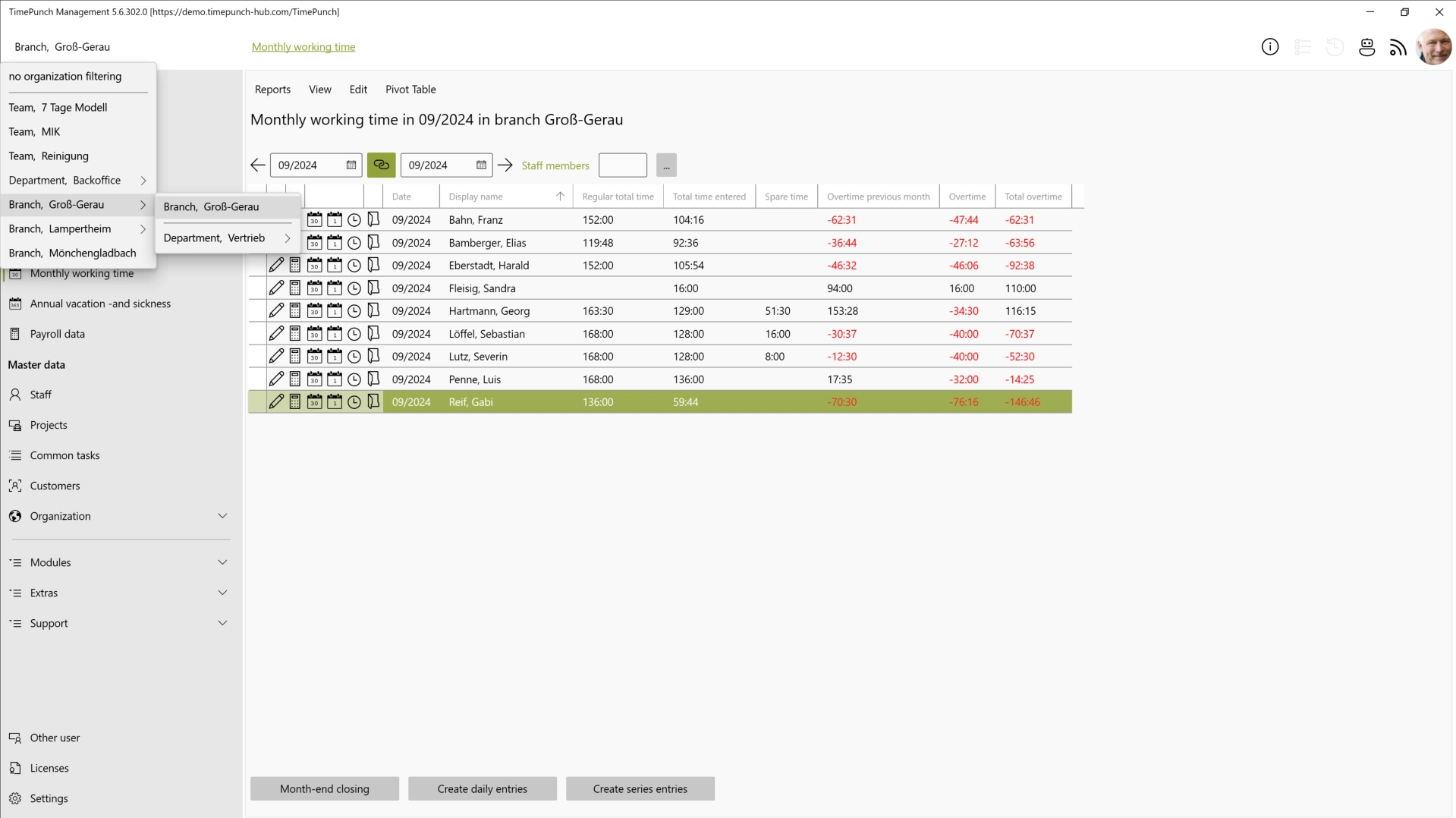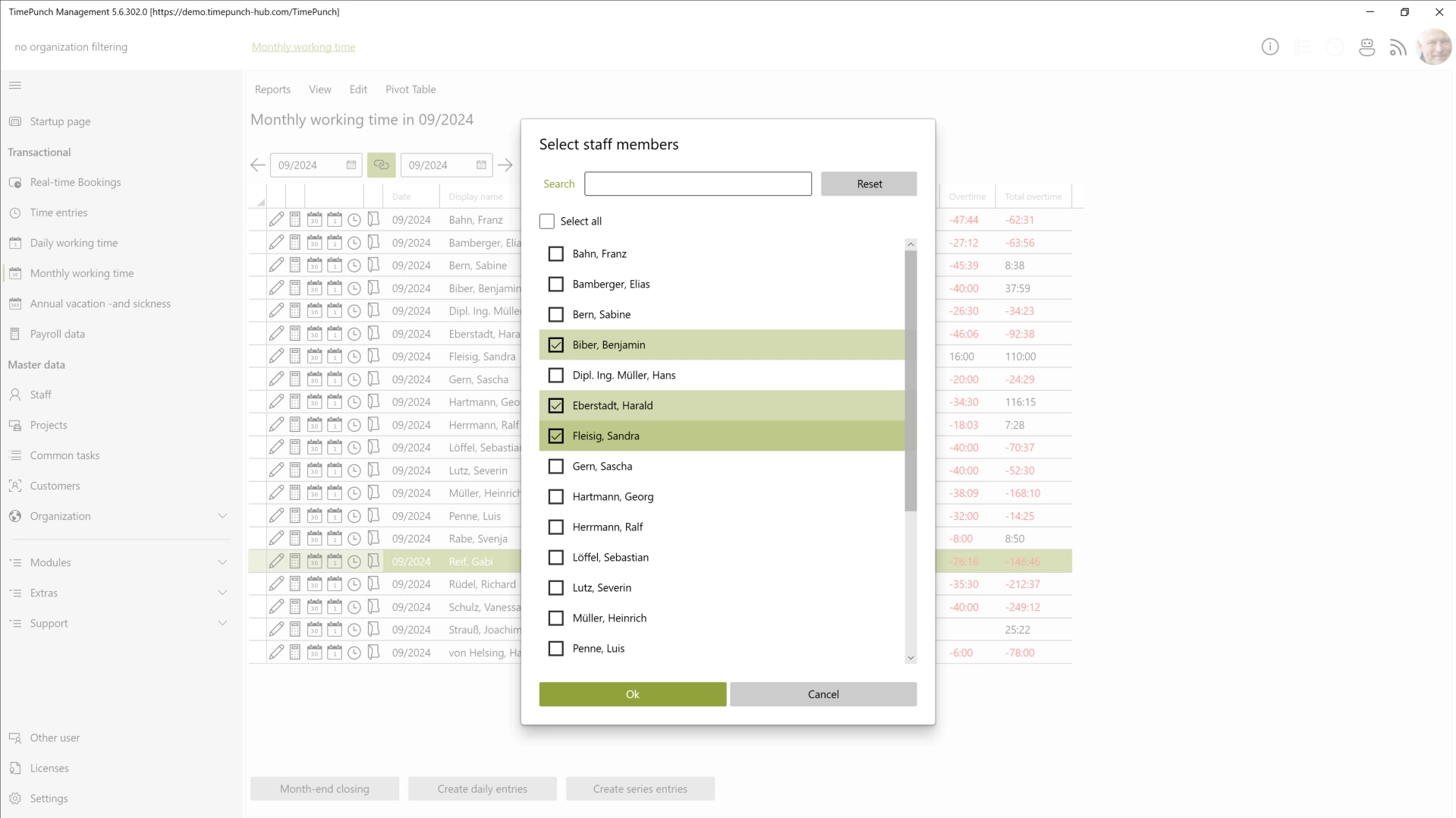Navigation
Forward navigation
Navigation in TimePunch always leads the user from a rough structure to a detailed overview to the concrete values. In doing so, the overall overview always remains consistent.

If the line is changed in an overview on the left, the next level of detail on the right changes with it, so that the data are consistent again.
Switching to a higher level of detail works as follows:
Double-click on a row : By double-clicking, the standard function of the current view is used. This is either the opening of a higher detail or editing the entry.
Using the Return key : The Return key also calls up the standard function of the current view. This is either to open a higher level of detail or editing the entry.
Using the buttons : The buttons at the bottom of the screen can also be used to call up functions. Here you will mainly find functions for editing the data. For example, create, edit or delete a new entry.
Using the inline navigation : If there are several options for the next level of detail, then the inline navigation is used. The individual symbols are found throughout, so that after a short period of familiarisation it is clear which data is displayed for the next worksheet.
Right-click on a line: Right-clicking on a line opens a pop-up menu that displays further functions. functions. These are usually not needed frequently and are therefore not found with the buttons.
Backwards navigation
Just as there are several options for forward navigation, there are also several ways to navigate backwards.

Switching to a lower level of detail works as follows:
Using the close button : The close button is the X located in each worksheet. Clicking on this button closes the currently highest worksheet.
Using the back button : Just like the close button, the left arrow is used to return to the worksheet with the current highest level of detail. the worksheet with the current highest level of detail.
Using the Escape key : Also popular with keyboard affine workers is the ability to close the worksheet using the Escape key. by pressing the escape key. This is quick and above all uncomplicated.
Using the navigation bar: By clicking on the navigation bar, a specific worksheet can be selected. Up to the selected worksheet, all other worksheets to the right of it are closed.
In-Place Changes
TimePunch 5 offers the advantage that changes can be made for several entries without leaving the worksheet. This means that entries can be edited much faster than usual.

To do this, the entry is first saved with the "Apply" button. Then the line in the previous worksheet can be and thus the worksheet can be filled again for editing or creating a time entry.
In this way, many time entries can be edited quickly, as the worksheet does not have to be closed and then reopened. and then opened again.
Organizational filter
In larger companies with many employees, it can be difficult to keep an overview when too many people are listed on one page.
To avoid this, TimePunch offers the option of creating teams, departments and branches. Once the company structure has been defined, the organizational filter can be used to narrow down the view to specific organizational units, such as a team or department.
At the top left of the window, there is a button for the organization filter. Clicking on it opens the organization tree, which contains all branches, departments and teams. Selecting an organizational unit restricts the displayed employees to the respective unit.

Input filter vs. selection dialog
In TimePunch, the overview lists can be filtered to provide a better overview. There are two ways to filter: either by typing directly into the filter field or by using the selection dialog, which is opened by clicking the button with the three dots (...)

The selection dialog offers the advantage of being able to select multiple records based on various criteria. The “Select All” button can be used to mark all entries, whereby individual entries can be deselected afterwards. Clicking “Select All” again will completely clear the selection.
